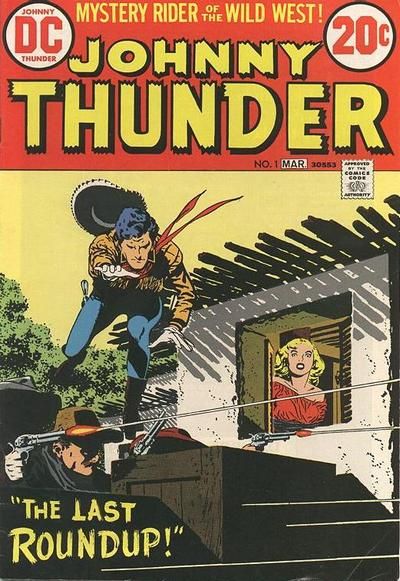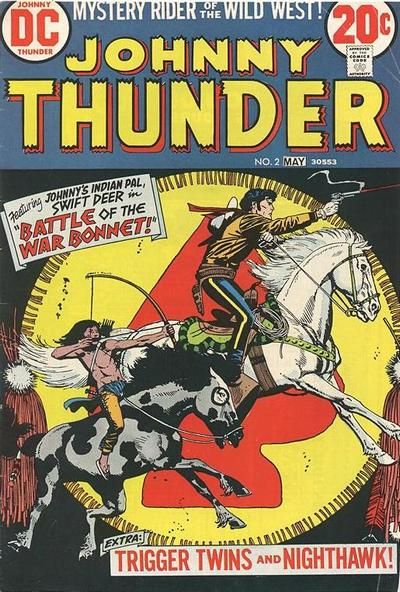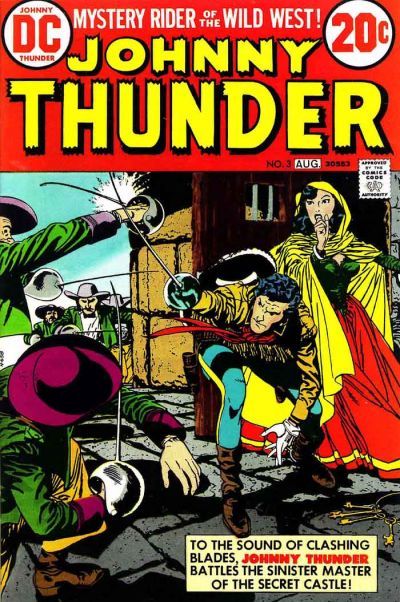Hi everyone - I'm Scott and as Brian mentioned a week or so ago, I'm a new contributor here at CSBG. I hope you enjoyed the Underapperciated Artist marathon that Brian posted on my behalf. We will go back to that well from time to time, but I plan to write on all sorts of topics related to old funnybooks. I hope that you'll find this column to be both informative and fun. I'm still getting used to the set-up here, so fogive me if there are a few initial glitches. For my first entry, I wanted to talk about something near and dear to my heart: old westerns.
It's difficult to imagine a time when the western genre was a dominant force in the comic book industry. By the time I started reading comics (late 70s), the number of western titles could be counted on one hand. Luckily, we have a few solid choices today with titles such as the revamped Jonah Hex and Lone Ranger.
This begs the question: what were westerns like when they ruled the Earth? Unfortunately, that can be a very pricey question to answer. I've come up with a solution that will give you a taste of Golden Age westerns for less than a couple gallons of gas.
In the early 70s, DC reprinted some of their finest Golden Age western stories in the pages of Johnny Thunder. The title character was originally handled by legendary creators Robert Kanigher and Alex Toth. JT is a schoolteacher by day, which is a great disappointment to his father, Mesa City's sheriff. It's a good gimmick that is central to many of the stories. As many of you likely know, Toth has a legion of rabid fans who try to scoop up everything he touched forcing the prices higher and higher. I should know; I've been trying to complete a run of All-American Western for 15 years (I'm one issue short). The early 70s Johnny Thunder, however, always pops up for relative peanuts.
The first issue leads off with 'The City Without Guns', in which Sheriff Tane is duped into quitting and everyone in town (including Johnny Thunder) hands over their hardware to the new, crooked sheriff. For those interested in finding out what makes Toth such a legend, this a great place to start. Next we have 'Nighthawk' a long running feature through the 50s, often drawn with grace and style by Ruben Moreira. Readers will get a feel for DC's house look of the 50s with this one. Finally we have another Johnny Thunder story, 'Johnny Thunder's Last Round-Up', from All-American Western #125 from 1952. This time, Toth's pencils are inked by Sy Barry, and it's a very different look than the first story. You can really see the influence on Mike Sekowsky here. Some very inventive storytelling, and John Tane is finally able to win his father's respect out of costume.
Johnny Thunder #2 is a real change of pace, with four shorter stories. TheJohnny Thunder stories are from All-Star Western (the successor of All-Star Comics) penciled by Mad-legend Mort Drucker. Toth worshippers may be disappointed at first, but Drucker is a fantastic storyteller and this is a good opportunity to check out some of his 'straight' art. We also get a 'Trigger Twins' story from 1957 drawn by Carmine Infantino, who had just helped revive the Flash. It's a bit looser than most of his Silver Age work. Finally, we get a real treat: a late 50s Nighthawk tale written by Gardner Fox with art by the team of Gil Kane and Joe Giella. Fans of Silver Age Green Lantern will immediately fall in love with this story.
Johnny Thunder #3 features the cover from All-American Western #122, which is one of my favorites as it foreshadows Toth's later work on Zorro. JT has his hands full with some diamond thieves. It's a great little story (one of Kanigher's finest in the series) with a nice mixture of action and mystery. Next we have a classic Gardner Fox mystery, which follows his time tested formula. The Gil Kane art is great, especially the splash page.
Finally, this short-lived series concludes with a post-Toth Johnny Thunder story by Drucker and Barry. Mesa City has been taken over by outlaws and JT has to take them out one by one. It's a strong story and you'll be amazed by how much can be accomplished in 6 pages.
Trust me; it's worth tracking down this series if only to see artwork by the likes of Toth, Kane and Drucker. If you're looking for a Loveless-type story, you'd better look elsewhere but if you're open to a little Golden Age charm, you'll be happy to have these in your collection.




